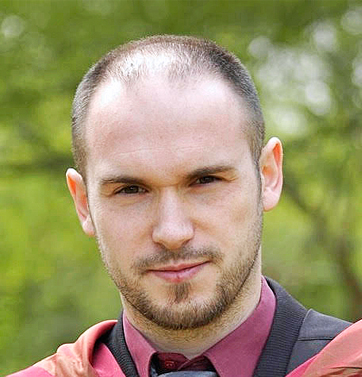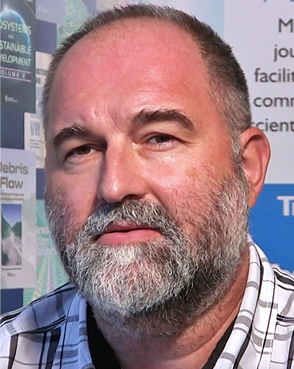TUTORIAL: Interaction of Humans with Electromagnetics Fields
Tutorial: Human Exposure to Non-Ionizing Radiation, by Dragan Poljak
The scope of this part of the Tutorial is to review various aspects of human exposure to undesired electromagnetic fields from artificial sources thus covering; basic ideas of electrosmog, coupling mechanisms between humans and electromagnetic fields, biological effects of electromagnetic fileds, electromagnetic-thermal dosimetry methods, international/national safety guidelines, relevant exposure limits and safety measures.
First, some theoretical and experimental techniques of incident field dosimetry for the determination of external fields due to power lines, transformer substations, radio base station antennas and mobile phones are studied.
Furthermore, the presentation aims to review some electromagnetic-thermal dosimetry methods for the assessment of human exposure to low frequency (LF) and high frequency (HF) non-ionizing electromagnetic fields. In particular, the analysis approaches are based on certain integral/differential equation formulations and related numerical solution procedures (based on the use of Boundary Element Method – BEM, and Finite Element method – FEM) for the calculation of induced current densities and fields, specific absorption rate (SAR) and related temperature increase in a tissue. Illustrative computational examples pertaining to some realistic exposure scenarios, such as; pregnant woman/foetus exposed to low frequency (LF) fields, the human eye, the human brain and the human head exposed to HF electromagnetic fields will be given.
Also, some numerical results for the nerve fiber stimulation will be presented as an example of biomedical application of electromagnetic fields. The obtained numerical results for induced current densities, internal fields and SAR are compared against exposure limits proposed by ICNIRP (International Commission on Non Ionizing Radiation Protection).
Finally, the last part of the Tutorial deals with deterministic stochastic-modeling to account for the the influence of the variability in the morphology and the tissue properties of the organs, such as the brain and eye, respectively, exposed to LF and HF fields. It will be shown how deterministic-stochastic modeling provides the estimation of the effects of the parameter uncertainties on the maximum induced current density, electric field and Specific Absorption Rate (SAR).
Tutorial: Stochastic Dosimetry of Human Brain: Application to Transcranial Magnetic Stimulation and High Frequency Electromagnetic Exposure, by Mario Cvetković
In addition to unwanted exposure to man-made electromagnetic (EM) fields due to steadily increasing number of power and communication installations, efficient medical treatments using electromagnetic radiation also require the knowledge of the accurate distribution of the EM fields inside the tissues. As measurement of these quantities is rather difficult, the use of computational methods has become necessary to determine internal field distributions. However, the computational dosimetry, dealing with quantification of effects caused by the field interactions with biological body faces one of the great challenges related to the uncertainty of the various input parameters. Hence, the so called stochastic dosimetry approach is required, combining the use of the deterministic techniques with the statistical methods.
This approach is demonstrated first on the case of the Transcranial Magnetic Stimulation (TMS), a noninvasive and painless technique for achieving excitation or inhibition of cortical brain regions. Although the variable efficiency of TMS stimulation can be primarily attributed to differences in relevant TMS settings such as coil positioning, pulse waveform, frequency, number of stimuli and the intensity of stimulation, the obvious difference in brain size between the individuals, as well as the biological tissue parameters such as permittivity and the electrical conductivity needs to be taken into account, since they will affect the distribution of the induced fields in the brain. The deterministic electromagnetic model combined with the use of a stochastic collocation technique can help in examining the influence of the brain tissue parameters’ uncertainty and the coil positioning variations on the induced electric field and the related electric current density in the human brain model, thus aiding in determination of the exact location of stimulation, in the interpretation of experimental results or in the design of a more efficient stimulation setups.
The stochastic collocation technique can also be combined with the electromagnetic-thermal model used within the dosimetric assessment of human brain exposed to high frequency EM field. Stochastic dosimetry can thus be used to examine the effects of the variability in the brain morphology and the tissue properties as well as in the sensitivity analysis of thermal parameter investigating their influence on the temperature rise as a direct consequence of the brain exposure to EM field.
Human Body Models for Numerical Dosimetry and Biomedical Applications, by Valerio De Santis
Numerical simulations are increasingly used to investigate both the impact of external electromagnetic fields on the human body and for medical applications, thereby complementing experimental studies. In the long term, the significance of numerical evaluations performed with computational human models can be expected to outweigh experimental studies. In this tutorial, an overview of human body models specifically developed for numerical dosimetry and biomedical applications will be envisaged. After a brief historical overview, the comparison between voxel-based models coming from MRI or CT image scans versus more complex CAD models will be presented. Automated vs. semi-automated segmentation procedures to develop these models will also be addressed. Finally, basic concepts on how to assign the right material properties to the several biological tissues will be undertaken.




